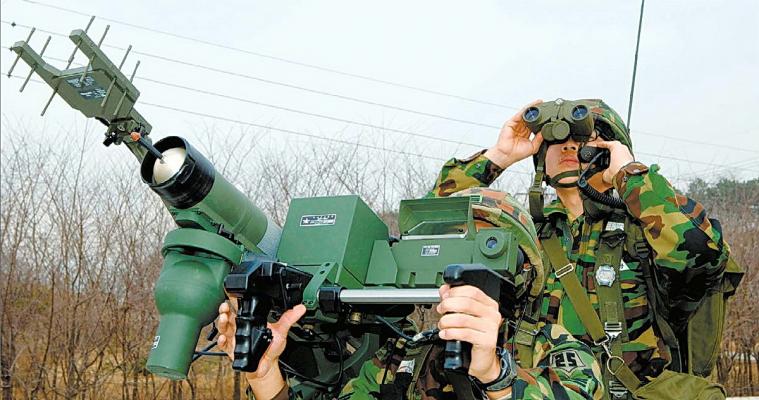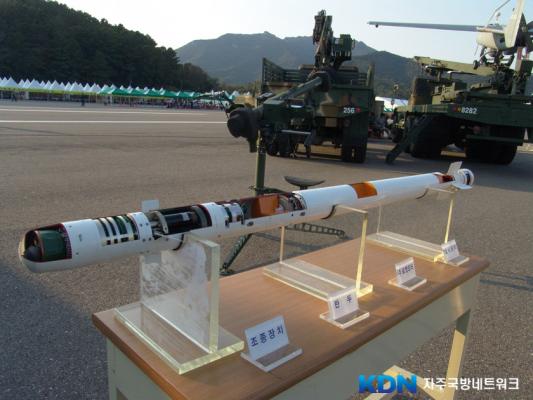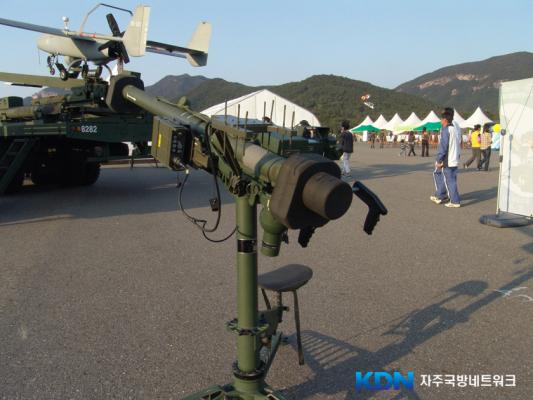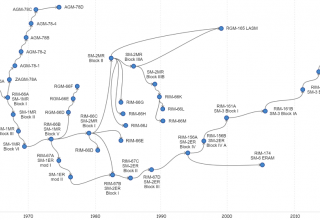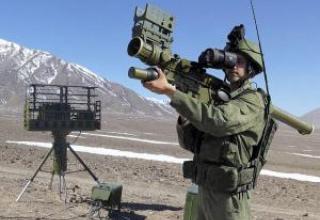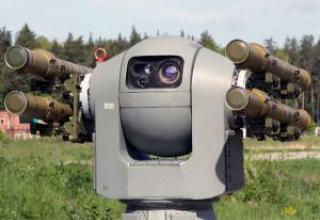The Shingung short-range man-portable air defense system (KP-SAM) is designed to fight enemy aircraft and helicopters at ranges up to 7 km. The Shingung complex was developed jointly by the State Agency for Defense Development (Agency for Defense Development) of the Republic of Korea and NEX1 Future Company Ltd (former name LG Innotek Co. Ltd).
The program to develop a South Korean man-portable air defence system under the designation of KP-SAM was launched in 1995 and has continued with varying success for several years. After receiving Russian complexes "Igla" in 2003 and concluding agreements on technical cooperation with Russian Military-industrial complex enterprises, the pace of work has increased dramatically. Under the contract signed in May 2003, Russia supplied $1 million worth of man-portable air defence systems components to South Korea. Later, a second similar contract worth $30 million was concluded. As a result, already in September 2005, the new man-portable air defence systems passed final tests and entered into service with the South Korean army in the same year. The estimated purchase volume is about 2000 pcs. Later on, in order to overcome dependence on imported technologies, the developers carried out extensive work on localization of production at the enterprises of the South Korean military industrial complex.
According to the developers of the Shingung man-portable air defence systems complex, they have good export potential and are actively offered on the arms market under the designation of Chiron. For example, at the beginning of 2011, the Shingung man-portable air defence systems were offered in the arms market under the name of Chiron. South Korea offered man-portable air defence systems to India as part of a request for proposals sent by the Indian government in early 2011. According to plans, by 2014 the Indian Armed Forces plans to purchase man-portable air defense systems worth $1.28 billion.
Composition:
The Shingung rocket is made according to the aerodynamic scheme "duck", has aerodynamic rudders in the front part and four opening stabilizers in the rear part (see photo1, photo2, photo3, photo4). Shingung differs from the Russian 9M342 ZUR by its somewhat large dimensions and starting weight. The Shingung missile is equipped with a dual-channel noise-protected homing head similar to the Russian 9E410 SSS developed by LOMO (see photo). South Korean specialists have developed a control system and a marching engine. As a result, the missile was able to engage targets at altitudes up to 3500m, the maximum range reached 7000m. The 2.5 kg shrapnel-flash BC is equipped with contact and non-contact fuses. The non-contact fuse has a range of 1.5m. According to the developers during the tests the complex showed 90% probability of hitting nonmoving targets.
The Shingung missile is launched using a lightweight portable launcher (MRU) (see photo1, photo2, photo3), which is similar in design to the Mistral MANPADS. The operator is placed in a swivel armchair and manually points the ELV at the target. The launcher is equipped with the "own - alien" identification equipment, developed by South Korean company LIG Nex1 (see photo), a Samsung thermal imaging device for night-time shooting and a trigger mechanism.
The launch mechanism (see photo) includes: a battery to power the electrical circuits, a cylinder with a refrigerant, a switching device that provides the necessary sequence of commands and signals, an indicator with an audible and vibrating device that is triggered when the missile's homing head captures a target.
For transportation the complex is dismantled into two parts: the first part is a container with the missile, the second part is a tripod with sighting devices and an electronic unit (see photo1, photo2) . Calculation of the complex - 2 persons. The launcher design allows for placement on different carriers (cars, ships, etc.), equipped with special fastening units (see photo).
NEX1 Future Company Ltd manufactures simulator complexes for Shingung/Chiron system, which are supplied together with combat complexes. The simulators serve for training and education of personnel and allow to simulate different weather conditions and tactical tasks of combat application (see photo).
Characteristics:
| Maximum firing range, km | 7 |
| Effective range of fire, km | 0.5-5 |
| Maximum flight altitude of the targets to be hit, km | 3.5 |
| Dimensions, mm: - length - diameter |
1680 80 |
| Weight of combat unit, kg | 2.5 |
| Start weight, kg | 14 |
| Weight of the rocket in the TPC, kg | 19.5 |
| Maximum missile flight speed, M | 2.1 |
| Weight of the complex with PU, kg | 24.3 |
Testing:
It should be noted that 14 years after the end of the Great Patriotic War, in the course of work on the development of the projectile engine for "remote mining", in his letter (out. 5/V 59) to the Director of Research Institute-582 State Committee of the Council of Ministers of the USSR on Defense Technology, Comrade S.I. Chichkov. (Balashikha 1, Moscow region), Deputy Director of Research Institute-147 (now FSUE "SNPP" Splav "(Tula) Alexander Nikitovich Ganichev reported: "...I recommend for the variant of an optic non-rotating projectile to use the launch rails for the projectile M-31 /BM-31-12/ which requires the diameter of the cassette to change to 300 mm".
